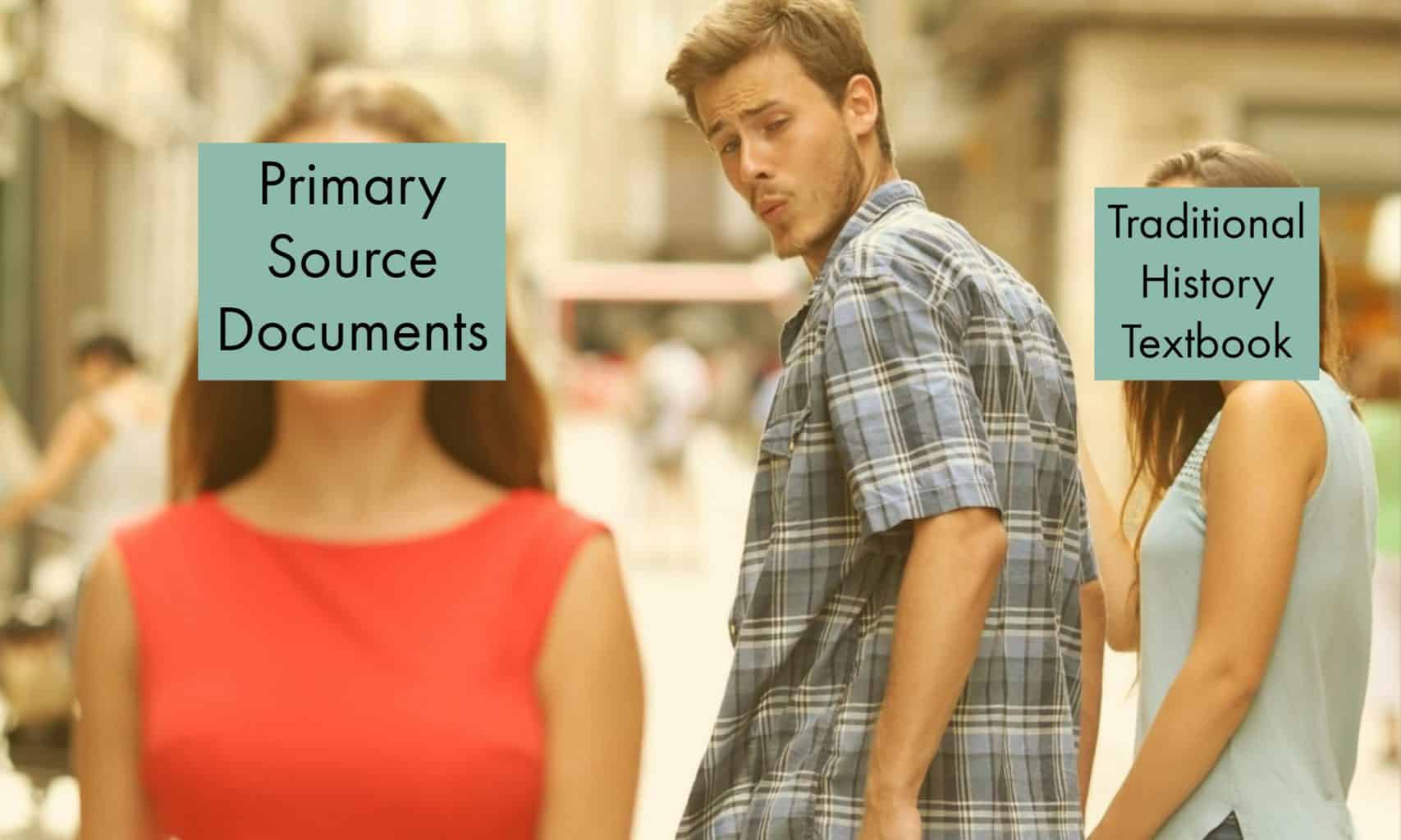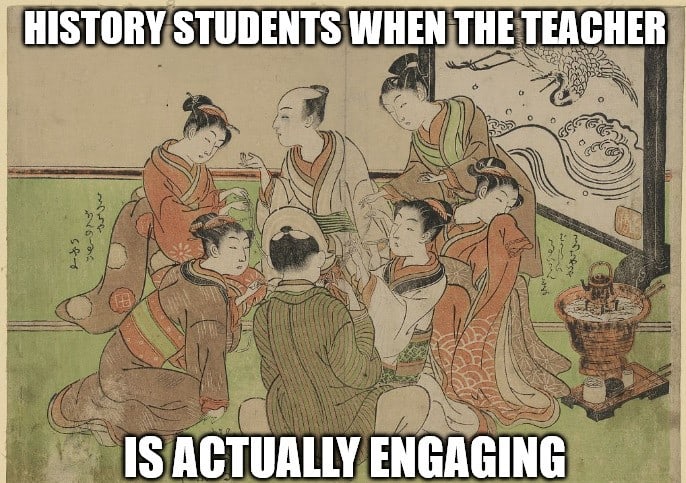The meme I designed highlights a key transition point for me during my time as a student learning history. Up until 9th grade, I never cared much for history; I saw it mostly as basic memorization of facts from dry textbooks as opposed to a meaningful educational experience. However, my 9th grade teacher showed me history was much more than what I had thought, as she started using primary source documents as opposed to traditional textbooks. This made history become much more alive to me, as instead of reading someone’s analysis of the historical event, I was learning about the event from people actually involved from the time period. I thought of how myself or my friends could one day be important to historians; maybe they would stumble upon our homework or cell phones to analyze the era that we lived in. History instantly became much more relatable and therefore more important to me, which is something I keep in mind when I think of how I will design history lessons in the future for my students.
My teacher from 9th grade not only made history more relatable to me, but also more meaningful and relevant. I always wondered before my 9th grade why it was important to know about the past. Why did it matter what happened to people who lived hundreds of years ago? With the way I was taught history in the past, that seemed to be the only thing that the tests I took cared about. However, this teacher taught me history was much more than just memorization. She taught us it was like a treasure hunt. You could ask any question you wanted, and there were sources out there, just like the ones we read in class, that would help you answer that question. It almost made me feel a bit like a detective searching for the truth. However, the truth was never entirely clear, and everything I asked had some grey in the answer. But that’s when I recognized the types of skills I’d be using when doing history: analysis of bias (my own and others), evaluation of the importance of the sources I found (how much they helped or didn’t help me answer my question), organization of all the data I found, and formulating a clear presentation on my findings to the class. All these skills are extremely valuable/necessary to almost any type of work I could imagine, and ever since then, the importance of history has only became more apparent to me.




